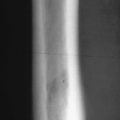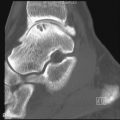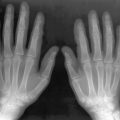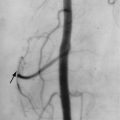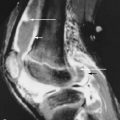Key Facts
- •
Specific terminology, available on the Internet, has been developed based on anatomy and pathology to describe lumbar spine disorders.
- •
Bony excrescences from the vertebrae have subtle features and accompanying findings that may allow identification of the underlying cause. Characteristic syndesmophytes of ankylosing spondylitis extend from the margin of one disk to the margin of the next and are symmetric, whereas osteophytes begin in a horizontal direction.
- •
Magnetic resonance imaging (MRI) findings must be correlated with clinical findings.
- •
Intervertebral disk herniation is a localized displacement (less than 180 degrees of the circumference) of disk material beyond the normal margin of the intervertebral disk space. The types of disk herniation are a protrusion, extrusion, and free fragment (sequestration).
- •
Differences in the anatomy and stresses placed upon the thoracic and cervical areas provide challenges to diagnostic MRI.
This chapter reviews the more common imaging findings of spine degenerative disease and associated conditions. Radiographs are often a useful first imaging step for evaluation of low back pain. The manifestations of disk degeneration from an imaging perspective, especially focusing on magnetic resonance imaging (MRI) findings, including the significance of marrow changes and high-intensity zones are highlighted. The imaging of cervical and thoracic degenerative disease is also discussed.
IMAGING FINDINGS OF DEGENERATIVE DISK DISEASE
The intervertebral disk is a composite structure consisting of three distinct components: the anulus fibrosus, the nucleus pulposus, and the cartilaginous endplates. They are cartilaginous joints (intervertebral symphyses). The anulus fibrosis is the limiting capsule of the nucleus pulposus. It is attached superiorly and inferiorly to the vertebral body ring apophysis by Sharpey fibers and is confluent with the anterior and posterior longitudinal ligaments. The anulus fibrosis is made predominantly of type 1 collagen and, because of the absence of free protons and a dense lamellar structure, is normally hypointense on all MRI pulse sequences. The nucleus pulposus portion of the disk is mainly made up of glycosaminoglycans (GAG) and has approximately 85% to 90% water content under normal conditions. Its signal intensity is intermediate on T1-weighted images and hyperintense on T2-weighted images, reflecting the high water binding of the GAGs. The bilocular appearance of the adult nucleus pulposus results from the development of a central horizontal band of fibrous tissue and is considered a sign of normal maturation. The intervertebral disk height reflects the status of the nucleus pulposus and in the lumbar spine typically increases gradually as one goes from cephalad to caudad, with the exception of the lumbosacral junction, which may be narrower than the remainder of the lumbar intervertebral disks. The end plates are covered by hyaline cartilage that serves as the biomechanical and metabolic interface between vertebral body and nucleus pulposus. The intervertebral disk configuration is different among the cervical, thoracic, and lumbar segments ( Figure 9-1, A to C ). In the lumbar spine, the anulus fibrosis tends to be thicker ventrally than dorsally.



In the normal lumbar spine, without segmentation anomalies, the widest intervertebral disk is at L4–5.
Disk degeneration begins early in life with the cervical spine preceding the lumbar spine (second to third decades versus fourth to fifth decades) and the thoracic spine being intermediate; the etiologies may be related to normal aging, genetic predisposition, or environmental factors. Component changes can occur in the nucleus pulposus, anulus fibrosus, cartilaginous end plates, and subjacent marrow. The nucleus pulposus typically shows desiccation, fibrosis, or a vacuum phenomenon (gas) while the anulus fibrosus undergoes mucinous degeneration. Fissuring may occur from radial tearing in the vertical or transverse direction leading to rupture of Sharpey fibers near the ring apophysis. The cartilaginous end plates may demonstrate marginal osteophytes and subarticular marrow signal alteration.
There is some confusion over the terminology of degenerative joint disease in general. Osteoarthritis or osteoarthrosis is a process of synovial joints. Therefore, in the spine, these terms are appropriately applied to the zygoapophyseal (Z-joint, facet), atlantoaxial, costovertebral, and sacroiliac joints. In the author’s practice, degenerative disk disease (DDD) is a term applied specifically to clinical findings accompanying intervertebral disk degeneration.
Osteoarthritis refers to degenerative changes in synovial joints, whereas degenerative disk disease refers to degenerative changes of the intervertebral disk. Spondylosis deformans (often shortened to spondylosis ) is a degenerative process of the spine involving essentially the anulus fibrosus and characterized by anterior and lateral marginal osteophytes arising from the vertebral body apophyses, while the intervertebral disk height is normal or only slightly decreased.
The widely endorsed nomenclature for lumbar intervertebral disks is supported by many subspecialty groups and should be the basis for describing disk-related pathology among different types of providers. It is important to recognize that the definitions of diagnoses should not define or imply external etiologic events such as trauma and should not imply relationship to symptoms. The definitions may, however, imply need for specific treatment. The terminology used in this chapter is supported by the “Nomenclature and Classification of Lumbar Disk Pathology” document available online.
The disk derives its structural properties largely through its ability to attract and retain water. Internal disk disruption (IDD) is a term that was coined in the 1970s to describe pathologic changes of the internal structure of the disk. Decreased tissue cellularity and altered matrix architecture characterize intervertebral disk degeneration. The physiochemical change of diminished water binding capacity in the GAGs is heralded on MRI by loss of T2 signal and has been called the “desiccated disk.” Thus some refer to this condition as “dark disk disease” or “black disk disease.”
Disk degeneration is accompanied by decreased water binding in the nucleus pulposus and therefore low signal on T2-weighted images, known as “dark disk disease.”
Osteophytosis is a hallmark of degenerative disk disease and should be differentiated from paravertebral calcification/ossification, syndesmophytes, and longitudinal ligament calcification/ossification. Marginal osteophytes tend to be horizontal and parallel to the disk margin, as though they are creating additional articular surface.
Osteophytes tend to project horizontally from the bone margins.
However, osteophytes can be bridging (i.e., from one level to the next). Anterior and lateral marginal osteophytes have been found in 100% of skeletons of individuals older than 40 years and are believed to be a consequence of normal aging, whereas posterior osteophytes have been found in only a minority of skeletons of individuals older than 80 years and thus are not inevitable consequences of aging. The claw osteophyte of McNabb is defined as the bony outgrowth arising very close to the disk margin from the vertebral body apophysis, directed with a sweeping configuration, toward the corresponding part of the vertebral body opposite the disk. These are findings of spondylosis deformans. Small horizontal bony projections are more likely to be associated with instability. Paravertebral calcification/ossification tends to come off the midportion of the vertebral body and can be seen in HLA B27 seronegative spondyloarthropathies such as psoriasis and reactive arthritis (formerly known as Reiter disease). There is often a paucity of DDD, which can be helpful in the differential diagnosis. Syndesmophytes are calcifications along the outer margin of the anulus fibrosus and have a thin vertical orientation from one disk margin to the next. These are hallmarks of ankylosing spondylitis and occur in young men with only minimal disk disease. Calcification may also occur in the anterior longitudinal ligament or posterior longitudinal ligament. Ossification of the posterior longitudinal ligament (OPLL) is a degenerative-related condition typically seen in the cervical spine ( Figure 9-2, A ) and not often seen in the lumbar spine.


Ossification of the posterior longitudinal ligament may cause cervical spinal cord compression.
Anterior longitudinal ligament mineralization is predominantly seen in the thoracolumbar spine ( Figure 9-2, B ). This is believed to be a senescent condition usually with only minimal disk height loss; when it involves greater than four contiguous segments, it is referred to as diffuse idiopathic skeletal hyperostosis (DISH).
DISH is characterized by flowing ossification along four or more contiguous vertebrae with normal disk spaces and sacroiliac joints.
Schmorl nodes are intervertebral disk herniations and may be considered a transosseous disk extrusion. Herniation of the nucleus pulposus occurs through the cartilaginous end plate into the vertebral marrow space. They often have a characteristic round or lobulated appearance. They may be enhanced after contrast administration, with ring-like enhancement being most common. They are often incidental and likely to be developmental or posttraumatic rather than purely degenerative or adaptive. The distribution is most frequent around the thoracolumbar junction. There is imaging evidence of a significant genetic association between the COL9A3 tryptophan allele (Trp3 allele), Scheuermann’s disease, and intervertebral disk degeneration among symptomatic patients.
Intradiscal calcification is most often incidental and can be seen in the pediatric population but is also frequently seen with DDD or simply as senescent change. However, when associated with predominantly nucleus pulposus disease (i.e., loss of disk height, present at virtually every lumbar segment), this is pathognomonic for alkaptonuria (ochronosis). Ochronosis is a hereditary disorder of amino acid metabolism leading to the accumulation of a dark pigment (organized polymer of homogentisic acid) in connective tissues. The imaging manifestations are marked height loss, vacuum cleft formation, and sclerosis. Osteophytosis is minimal, as this is primarily a nucleus pulposus disease. The radiographic hallmark is dystrophic calcification universally present in all disks.
Disk contour changes are part of the degenerative or maturation process and are broadly characterized as bulges and herniations. The following is a summary of the accepted nomenclature for abnormal disk contours as applied primarily to the lumbar spine. MRI is well suited to reveal the severity of disease and to characterize contour abnormalities in regard to size, morphology, and location. Mass effect on the spinal cord and nerve roots can also be demonstrated. However, the MRI findings need to be correlated with the clinical syndrome. Hence, the following are pathoanatomic descriptors that do not imply a specific pathoetiology or syndrome.
The posterior disk margin tends to be concave in the upper lumbosacral spine ( Figure 9-3, A ) and is straight or slightly convex at L4-5 and L5-S1. The posterior margin typically projects no more than 1 mm beyond the end plate.





Stay updated, free articles. Join our Telegram channel

Full access? Get Clinical Tree



